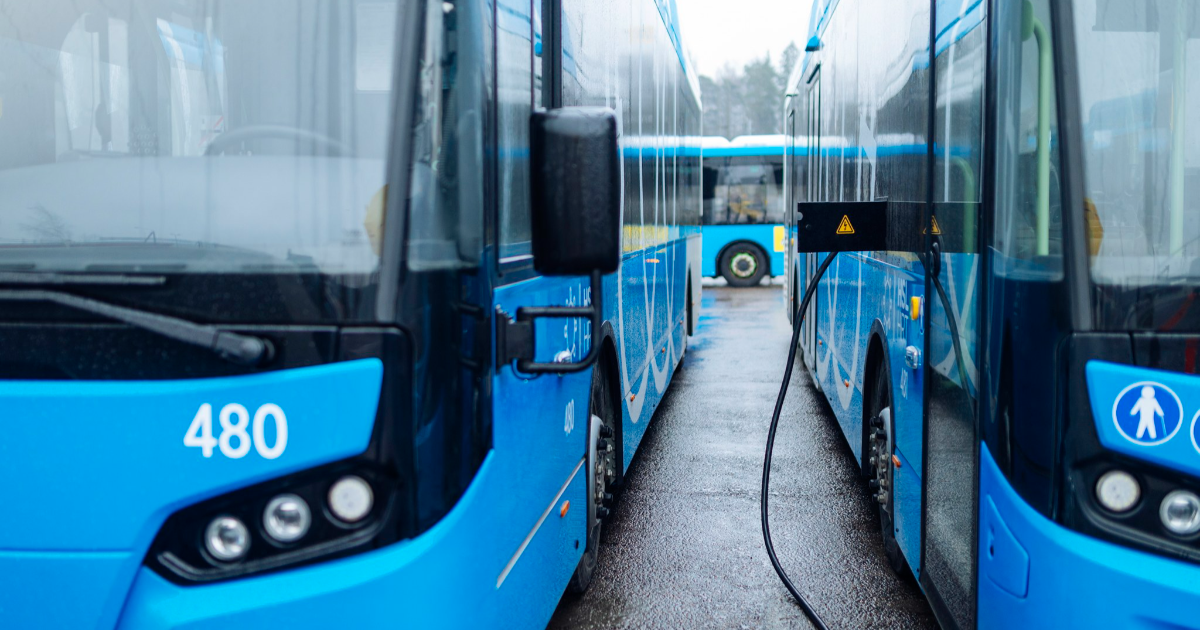More low-emission vehicles onto Finnish roads – EU Directive implemented in August

On 15 July, the President of the Republic approved the Act on Environmental and Energy Efficiency Requirements for Vehicle and Transport Service Procurements. The Act will place obligations on municipalities and the State to ensure a certain share of zero- and low-emission vehicles in public procurement processes. The Act will enter into force on 2 August 2021.
The Act will implement the EU Clean Vehicles Directive. It will apply, for example, to the procurement of vehicles and transport services by municipalities, the State or parishes in relation to school transport, waste collection, local bus transport and transport reimbursed by the Social Insurance Institution of Finland. It will also apply to procurement through concession contracts.
"We will have low-emission public transport by the end of the ongoing decade when a significant part of transport procured by municipalities and the State will be powered by electricity or gas. In the drafting of the bill, due consideration was given to regional differences in, for example, the availability of charging infrastructure. Finland's legislation supports the European Union's aim to reach carbon neutrality by 2050. It is also part of the Government's fossil-free transport programme," says Minister of Transport and Communications Timo Harakka.
The act also takes into account regional justice. In the case of municipalities, the minimum requirement for environmentally friendly procurements will be introduced gradually based on distances, regions' economic capacities, and the availability of charging points. In the south, municipalities will have stricter requirements than in the north. The stricter requirements will also apply to the 17 largest cities in Finland: Espoo, Helsinki, Hämeenlinna, Joensuu, Jyväskylä, Kouvola, Kuopio, Lahti, Lappeenranta, Oulu, Pori, Rovaniemi, Seinäjoki, Tampere, Turku, Vaasa and Vantaa. The act will replace the Act on Consideration for the Energy and Environmental Impact of Vehicles in Public Procurement.
Requirements divided into three vehicle categories
The minimum requirements for low and zero-emission procurement are divided into three categories of vehicles: passenger cars and light commercial vehicles, trucks, and buses. The obligations have been divided into two procurement periods: from 2 August 2021 to 2025 and from 2026 to 2030.
The requirements will apply when a contracting entity buys, hires, leases, hire-purchases or acquires certain transport services. The regulation will apply to new acquisitions.
1. Passenger cars and light commercial vehicles - increase in the share of electric cars
• According to the Directive, Finland must ensure that, during each procurement period, 38.5 per cent of passenger and vans purchases are environmentally friendly.
• During the first procurement period, vehicles with emissions that do not exceed 50 CO2g/km, i.e. plug-in-hybrids or fully electric cars, will be considered environmentally friendly passenger cars and light commercial vehicles.
• During the second procurement period, vehicles with 0 CO2g/km emissions, i.e. fully electric cars, will be considered environmentally friendly passenger cars and light commercial vehicles.
• Municipalities belonging to different regions will have different minimum share requirements.
2. Trucks - environmentally friendly vehicles run with biofuel, electricity, gas or hydrogen
• According to the Directive, Finland must ensure that 9 per cent of truck purchases in the first procurement period and 15 per cent in the second procurement period are environmentally friendly.
• Trucks powered by alternative fuel, i.e. biofuel, electricity, gas or hydrogen, are categorised as clean trucks.
• Municipalities belonging to different regions will have different minimum share requirements.
3. Buses - more fully electric buses
• According to the Directive, Finland must ensure that 41 per cent of new bus purchases in the first procurement period and 59 per cent in the second procurement period are environmentally friendly.
• The requirements will apply only to buses in local public transport.
• An environmentally friendly bus is defined as a vehicle running on alternative fuel such as electricity, hydrogen, gas or biofuel.
• During each procurement period, half of environmentally friendly buses must be fully electric buses, i.e. 20.5 per cent in the first period and 29.5 cent in the second period. This objective will be introduced gradually taking into account regional differences.
What is excluded from the scope of the Directive?
The Directive does not apply to buses and coaches used in long-distance transport and to vehicles used in agriculture and forestry, or to two or three-wheel vehicles. The regulation does not apply to, for example, emergency vehicles, military vehicles and construction site vehicles. Category M1 vehicles intended for wheelchair users are also exempted from the requirements.
What next?
The Act will enter into force on 2 August 2021, when the obligations of the Directive will also enter into force. The Act will apply to acquisitions in which the procurement procedure is initiated after the entry into force of the Act.
The Finnish Transport and Communications Agency, Traficom, will monitor compliance with the Act. The monitoring will be based on the ex post notice required by procurement legislation.
Inquiries:
Pinja Oksanen, Senior Officer, tel. +358 295 342 182, pinja.oksanen(at)lvm.fi
Maria Hyvönen, Senior Specialist, tel. +358 295 342 090, maria.hyvonen(at)lvm.fi
Press release 15 December 2020: Making public vehicle procurement environmentally friendly – draft bill circulated for statements
Valtioneuvosto.fi: Materials form presidential session of the Government (in Finnish)
Valtioneuvosto.fi: Materials from Government plenary session (in Finnish)
Gateway to Information on Government Projects: Government proposal for an Act on Procurement of Clean and Energy-Efficient Road Transport Vehicles



